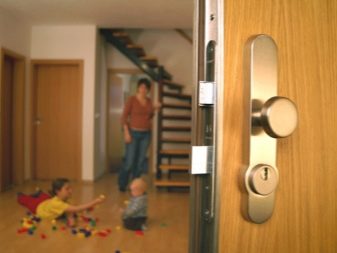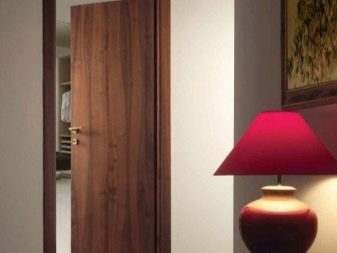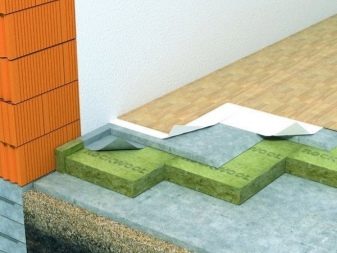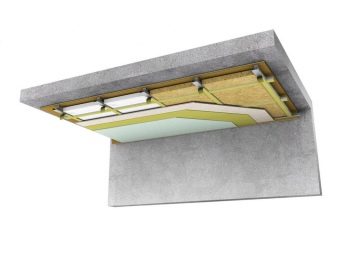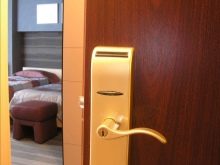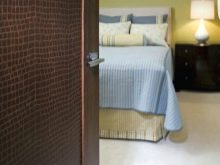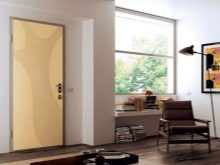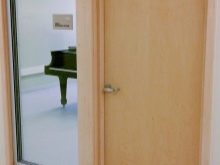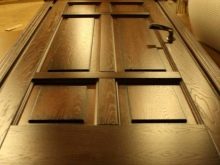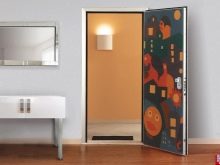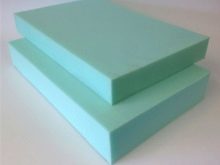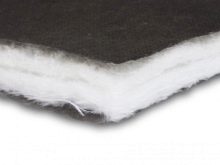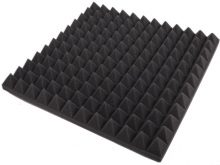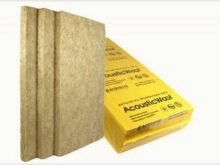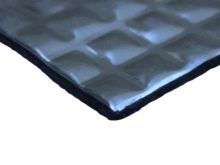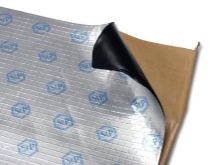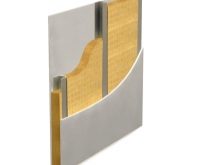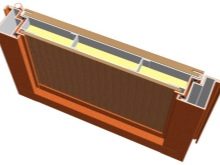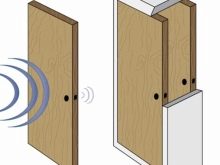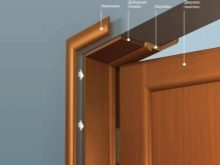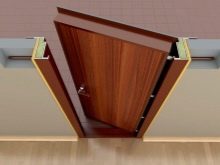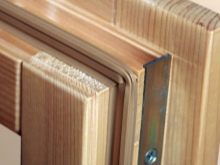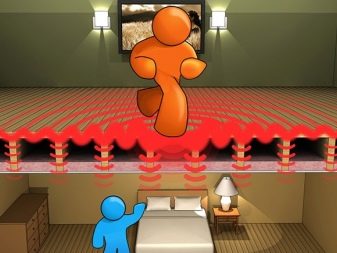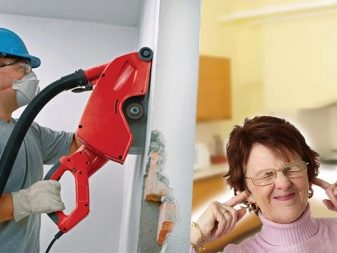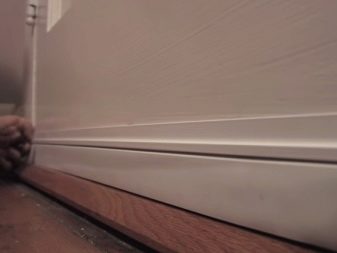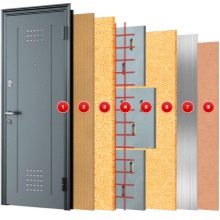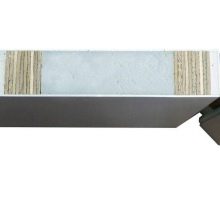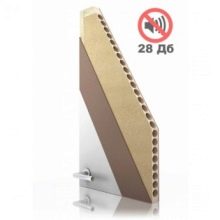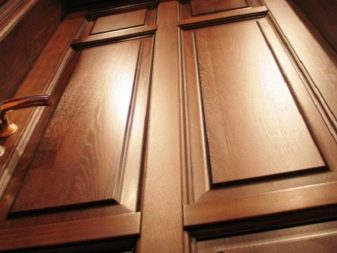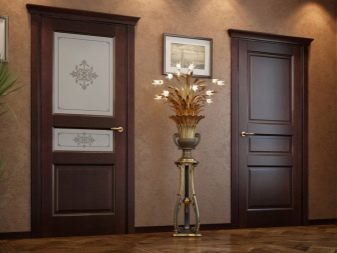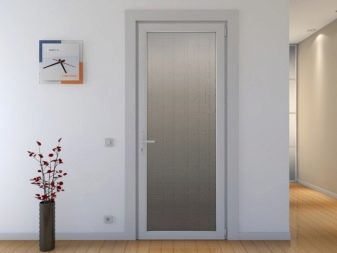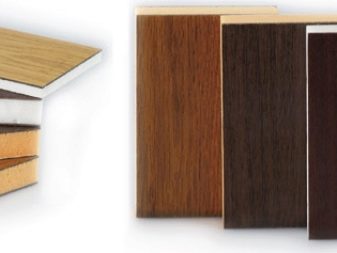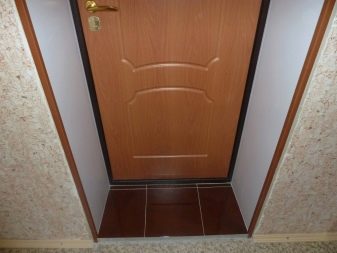Features sound insulation doors
Coming home after a busy day, we want to relax and enjoy the silence. But this is not always possible: sometimes the noise from the street or from neighboring apartments can be very intrusive. To protect yourself from obsessive sounds and ensure a comfortable stay at home, you need to soundproof your home. Sound insulation doors will help in this.
Why need insulation in the apartment?
Sound insulation is a reduction in the amount of noise that enters a dwelling. It is achieved by sealing the walls, windows, ceiling and doors. The noise level is determined in decibels. This characteristic is established by state standards and is measured by a special device.
It is not advisable to install soundproof doors in an apartment if the windows and walls do not have such properties. If you still decide to protect yourself from noise, then it should be done from all sides.
Soundproofing your home will help you relax, relieve tension, and also protect your nervous system from negative influences. Such doors for children's rooms are especially relevant. They will provide kids a quiet and comfortable rest.
In addition to smoothing noise, soundproof doors perform a number of related functions:
- Anticorrosive. Insulating filler prevents the development of mold in the doors of interior doors.
- Durability. Since “quiet” doors require additional reinforcement, this strengthens their design. Makes it heavier and more durable.
- Heat preservation. Most noise-suppressing materials have insulating properties. They eliminate drafts, restrain the penetration of cold into the apartment.
Thus, acquiring soundproof doors, you get a few more nice bonuses.
Types and materials
Conventional doors can withstand noise levels up to 30 dB.But if there is a need to improve the sound insulation properties of the door unit, noise-insulated doors come to the rescue.
Externally, the soundproofed models are similar to the standard ones, but inside them there are layers of noise-insulating material. It may be:
- Sintepon - quite soft fiber, characterized by high resistance. For good sound insulation is located in several layers;
- Polystyrene possesses good sound insulation properties. Release form: granules, sheets or liquid;
- Mineral wool - fire resistant material, but able to absorb moisture and shrink over time;
- Foam rubber - the cheapest raw material most often used for the door leaf;
- Splen or acoustic foam. The sound wave, penetrating into it, is lost and does not find a way out. It is glued to the surface with the help of a sticky layer, which provides it with a tight fit;
- Izolon It is also a derivative of foam rubber, but significantly wins against its background;
- Styrofoam well protects against noise, but has low fire-resistant qualities. Not the most suitable option;
- Polyurethane foam - A good soundproof sheet.It has a high resistance to fire;
- Vibro filter - multilayer material, which includes bitumen and aluminum foil. Ensures tightness, as due to its elasticity it fits snugly to the surface. This enhances its sound insulation abilities.
In addition to the finished soundproof doors, there are types of noise insulation that you can independently add to your usual entrance accessories:
- Lay the above insulating fillers inside the fabric;
- Install additional panels that are attached to the main canvas. This may be hardboard, MDF, laminate, wall paneling, leatherette;
- Establishment of the second door. At the same time, not only the extra canvas, but also the air space between the doors will help to reduce the noise level entering the apartment.
Additional soundproofing methods
Also increase the effect of noise insulation will help such simple devices:
- Automatic threshold: a magnetic gasket is installed in the floor. When the door closes, it connects to the metal strip in it itself, which ensures hermetic closure.
- Door frame. If it is made of metal, then from the inside the box is filled with concrete. If from a chipboard, assembly foam is used. The goal is to reduce the gap between the opening and the box. By standards, their size is allowed up to 1 cm.
- Compactor located around the perimeter of the doorway. Thanks to him, hermetic closing of doors is also achieved. Of the most used emit:
- rubber bands or pipes;
- foam rubber (soft yellow tape);
- isolon (white, in density above foam rubber);
- silicone circuit;
- magnetic (provides the greatest tightness).
Virtually all seals are provided with an adhesive backing, due to which they are fixed to the door. The exception is silicone, which is attached with a plastic rib. Compactor is the easiest and most effective option to enhance the sound insulation of doors.
Regulations
First of all, soundproofing apartment doors are designed to slow down the passage of sound from the street to the apartment.
There are the following types of noise:
- Air: born in the atmosphere and through sound waves passes through the barrier;
- Shock: formed due to any manipulation (rearrangement of furniture, jumping).It is measured using the "top" machine.
State standards establish insulation standards for both categories of noise.
It is worth mentioning the classes of houses, since each category has its own standards:
- Class A: extra comfort;
- Class B: comfort of existence;
- Class B: acceptable conditions.
The reduction of airborne noise is carried out not only by doors, entrance and interior, but also surfaces of other structures. A special term for soundproofing was introduced. It characterizes only one design.
Measured in decibels and determined by the insulation index:
- Class A room - 54 dB;
- Class B premises - 52 dB;
- Class B room - 50 dB.
The index of the impact noise of the apartment and interior doors is:
- Class A room - 55 dB;
- Class B premises - 58 dB;
- Class B room - 60 dB.
Noise insulation levels
Noise is a rather unpleasant sound. It is irritating to the nervous system, able to unbalance. The person responds calmly to sounds in the range of 25-60 dB. When exposed to high sound waves of 90 dB for quite a long time, nerve disorders in the form of insomnia and neurosis can develop. With a sound of 100 dB, a person may become deaf.
To protect yourself from extraneous negative influences, choose doors with good noise insulation for your home. They are first level and advanced.
The first class includes doors that are able to protect against noise flux of 32 dB. If to compare, the sound wave of the conversation is 45 dB. Designs with enhanced levels withstand noise at 40 dB and above. It all depends on the material of construction.
Doors made using sandwich technology have good sound insulating capabilities, that is, they have several layers of sound-absorbing material. Plus outside such products have a covering in the form of the MDF panels or a leather substitute.
How to choose?
First, decide what you want to isolate. If we are talking about the door for the house, then there may be an option for independent soundproofing. The thing is that by standards the door design must withstand 26 dB. Thus, if outside the noise level is 60 dB, then 34 dB penetrates the room. A sound wave from 25 to 50 dB is considered comfortable for a person. Therefore, for such sound insulation it will be enough to lay the insulation material yourself or to reinforce the door upholstery, install a gasket or a hermetic threshold.
If we are talking about a specialized room (recording studio), then it is better to purchase a ready-made model. To date, manufacturers offer a fairly wide choice of interroom doors that resist noise. Outside, they, like ordinary door structures, can be finished with chipboard, MDF or laminate. But inside must contain several layers of insulating filler.
Good reviews of sound insulation properties are wooden doors made of oak or pine. Fire prevention models also help reduce sound penetration. Their heat insulator is able to contain sound up to 45 dB.
We should also talk about the room doors. It is not necessary to install all soundproof interior doors in the apartment. It is enough to choose a few rooms where it is really necessary. It can be a bedroom or a children's room.
For this purpose, of course, it is best to install a door leaf made of natural solid wood. Here, a sufficiently high density of the product will play its role. Fiberboard can also be used, but the material must be solid, not empty.For better sound insulation inside the door have a cardboard, which is laid on the type of honeycomb.
As for the glass doors, they are often used to separate rooms because of their attractive aesthetic appearance. In order for them to delight not only beauty, but also silence, use as a glass single or double glazed windows. Double pretend door products also have a good soundproofing effect.
Well proven doors with sandwich panels. They are PVC sheets, between which there is an insulator made of foam plastic, polystyrene foam and other similar materials. Such designs not only suppress noise, but also have good thermal insulation properties.
Summarizing all the above, it becomes clear that currently there is a wide choice of soundproof doors. Having decided on their purpose and location, you can easily choose the most suitable option for yourself.
After watching the video, you can learn how you can make soundproofing of the front door with your own hands.
Successful examples and options
A door with a sandwich panel is ideal for sound insulation.It is better to use PVC for upholstery, as this material has a lot of positive qualities. It may have a thickness of 18 to 45 mm. Aesthetics will add stained glass inserts with a variety of performance techniques.
Products made from natural materials are always relevant and perfectly cope with their functions. Doors made of solid wood, such as oak or pine, can be both entrance and interior. They hold the sound due to its thickness. They are impressive by their greatness, and, despite their massiveness, they look pretty impressive.

